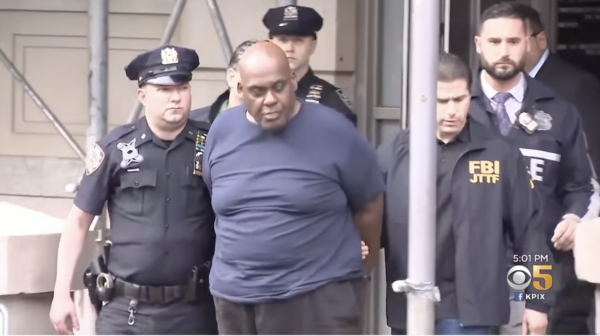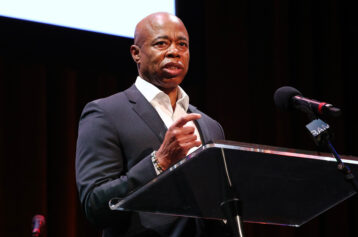Attorneys for Frank James, the man arrested for the April 12 mass subway shooting in Brooklyn, said the FBI violated his constitutional rights.
According to court documents, FBI agents questioned, took multiple samples of James’ DNA and instructed him to sign documents without his defense attorney present on April 26. The federal agents did not advise the defense before or after the probe, the lawyer wrote, nor did they provide James with a warrant, which she claimed was a violation of federal law.

“Contrary to standard practice, the government committed this intrusion absent advance notice to counsel, depriving us of an opportunity to be heard or to be present,” public defender Mia Eisner-Grynberg wrote.
Eisner-Grynberg said the federal government only provided the search warrant to her after she asked but did not provide supporting documentation or any explanation for bypassing procedure. She got word of the incident after from James.
Federal prosecutors have called the allegations “hyperbole” and deny that James was interrogated. They said the DNA was collected under “a judicially authorized search warrant,” and Eisner-Grynberg could have been known about it in advance. The FBI has not responded to the claims.
Authorities have accused James, 62, of donning a gas mask and releasing smoke canisters in a subway car before unloading his gun and shooting 10 subway riders. Another 13 passengers were injured, reports show.
James was arrested the next day for a federal terrorism offense used for attacks on mass transit systems. He has not entered a plea. Federal prosecutors must prove that James traveled across a state line to carry out the attack and transported supplies needed for the crime across a state line.
Eisner-Grynberg said her office was appointed to James’ case when he was apprehended on April 13. The Sixth Amendment guarantees the “right to an effective counsel at all “critical stages” of the criminal proceedings,” she said.
By conducting the interrogation without the defense present, the federal government was unfair and violated the accused’s fundamental rights, she added. Eisner-Grynberg also said the FBI violated James’ core rights under the Fourth and Fifth amendments.
Authorities reportedly found a Glock 17 9mm handgun on the scene that James purchased in Ohio in 2011. They also connected James to a key for a U-haul van they said he rented in Philadelphia. It was later discovered near a subway station in Gravesend, Brooklyn.
Authorities found 33 shell casings, 15 bullets, a hatchet, a bag filled with fireworks and smoke bombs on the scene. They reportedly identified James in video footage entering another subway station in Brooklyn with a black cart that was later recovered at the crime scene. James’ orange jacket and the construction helmet he was wearing were also recovered.
James reportedly evaded police by boarding another train about 10 minutes after the shooting, authorities said. Multiple people reported seeing James around Manhattan the following day. However, investigators believe the suspect was the one who made a 911 tip that led to his arrest.
“I think you’re looking for me,” James reportedly said. “I’m seeing my picture all over the news, and I’ll be around this McDonald’s.”
The alleged gunman was not at the McDonald’s when officers arrived, but a man being hailed as a Good Samaritan alerted them to James’ location.
James is being held without bail at a federal detention center in Brooklyn. He has an array of arrests from the 1990s and one in 2007 that range from trespassing, disorderly conduct, larceny, theft of service to a criminal sex act. Authorities said he is not connected to any terrorist groups, and his motive for the attack is unclear.
James made several YouTube videos slamming New York Mayor Eric Adams, the city’s mental health system and its homeless problem. He also warned of an impending race war and talked about his urge to commit violent acts. James expressed support for mass shooters a week before the attack.
“We need to see more mass shootings. Yeah. … We need to see more. There has to be more mass shootings to make a [N-word] understand. … It’s not about the shooter; it’s about the environment in which he is — he has to exist,” James said.
